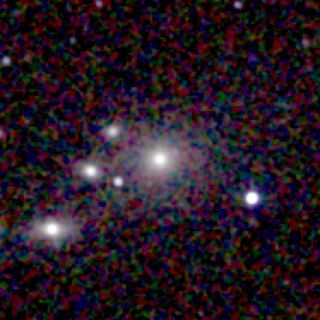
NGC 7012 is a large, bright elliptical galaxy located about 380 million light-years away from Earth in the constellation Microscopium. NGC 7012 was discovered by astronomer John Herschel on July 1, 1834.
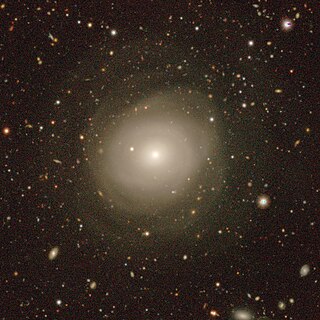
NGC 466 is a lenticular galaxy located about 227 million light-years away from Earth in the constellation Tucana. NGC 466 was discovered by astronomer John Herschel on October 3, 1836.
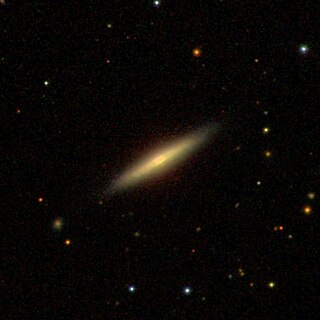
NGC 489 is probably an edge-on spiral galaxy located about 97 million Light-years away from Earth in the constellation Pisces. NGC 489's calculated velocity is 2507 km/s. NGC 489 was discovered by German astronomer Heinrich Louis d'Arrest on December 22, 1862.

NGC 7038 is an intermediate spiral galaxy located about 210 million light-years away in the constellation of Indus. Astronomer John Herschel discovered NGC 7038 on September 30, 1834.

NGC 7043 Is a barred spiral galaxy located about 200 million light-years away in the constellation of Pegasus. NGC 7043 is part of a pair of galaxies that contains the galaxy NGC 7042. It has an estimated diameter of 73,100 light-years. NGC 7043 was discovered by astronomer Albert Marth on August 18, 1863.
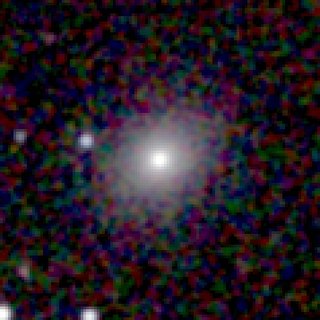
NGC 7057 is an elliptical galaxy located about 230 million light-years away in the constellation of Microscopium. NGC 7057 was discovered by astronomer John Herschel on September 2, 1836.

NGC 7059 is a nearby spiral galaxy located about 70 million light-years away in the constellation of Pavo. NGC 7059 was discovered by astronomer John Herschel on July 22, 1835.
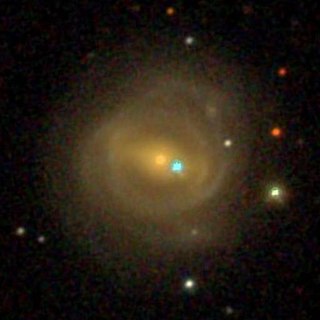
NGC 7065 Is a barred spiral galaxy located about 320 million light-years away in the constellation of Aquarius. NGC 7065 is part of a pair of galaxies that contains the galaxy NGC 7065A. NGC 7065 was discovered by astronomer Albert Marth on August 3, 1864.

NGC 7066 is a spiral galaxy located about 210 million light-years away in the constellation of Pegasus. NGC 7066 was discovered by astronomer Lewis Swift on August 31, 1886.
NGC 7070 is a spiral galaxy located about 100 million light-years away in the constellation of Grus. It has a close companion galaxy called NGC 7070A. NGC 7070 was discovered by astronomer John Herschel on September 5, 1834.
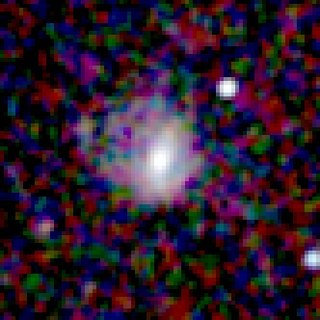
NGC 7072 is a spiral galaxy located about 210 million light-years away in the constellation of Grus. NGC 7072 was discovered by astronomer John Herschel on September 5, 1834.

NGC 7073 is a spiral galaxy located about 230 million light-years away in the constellation of Capricornus. NGC 7073 was discovered by astronomer Albert Marth on August 25, 1864.

NGC 7085 is a spiral galaxy located about 365 million light-years away in the constellation of Pegasus. NGC 7085 was discovered by astronomer Albert Marth on August 3, 1864.

NGC 7087 is a barred spiral galaxy located about 215 million light-years away in the constellation of Grus. NGC 7087 was discovered by astronomer John Herschel on September 4, 1834.
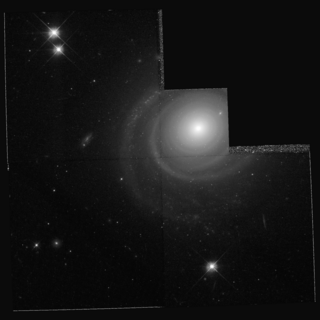
NGC 7096 is a grand-design spiral galaxy located about 130 million light-years away in the constellation of Indus. NGC 7096 is also part of a group of galaxies that contains the galaxy NGC 7083. NGC 7096 was discovered by astronomer John Herschel on August 31, 1836.

NGC 4907 is a barred spiral galaxy located about 270 million light-years away in the constellation of Coma Berenices. It is also classified as a LINER galaxy. NGC 4907 was discovered by astronomer Heinrich d'Arrest on May 5, 1864. The galaxy is a member of the Coma Cluster, located equidistant between NGC 4928 and NGC 4829.
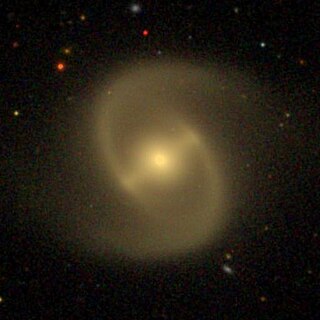
NGC 4440 is a barred spiral galaxy located about 55 million light-years away in the constellation of Virgo. NGC 4440 was discovered by astronomer William Herschel on April 17, 1784. It is a member of the Virgo Cluster.

NGC 4606 is a spiral galaxy located about 55 million light-years away in the constellation of Virgo. NGC 4606 was discovered by astronomer William Herschel on March 15, 1784. It has a disturbed stellar disk suggesting the actions of gravitational interactions. NGC 4607 may be a possible companion of NGC 4606. However, their redshifts differ by about 600 km/s, making it unlikely that they are a gravitationally bound pair. NGC 4606 is a member of the Virgo Cluster.

NGC 4498 is a barred spiral galaxy located about 50 million light-years away in the constellation Coma Berenices. NGC 4498 was discovered by astronomer William Herschel on March 21, 1784. NGC 4498 is a member of the Virgo Cluster.
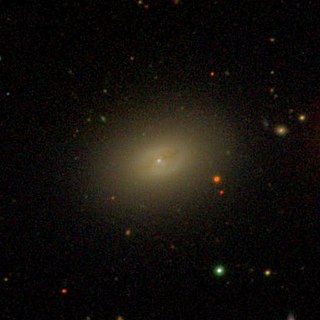
NGC 4506 is a spiral galaxy located around 50 million light-years away in the constellation Coma Berenices. It is classified as peculiar due to the presence of dust that surrounds its nucleus. NGC 4506 was discovered by astronomer William Herschel on January 14, 1787. It is a member of the Virgo Cluster.



















